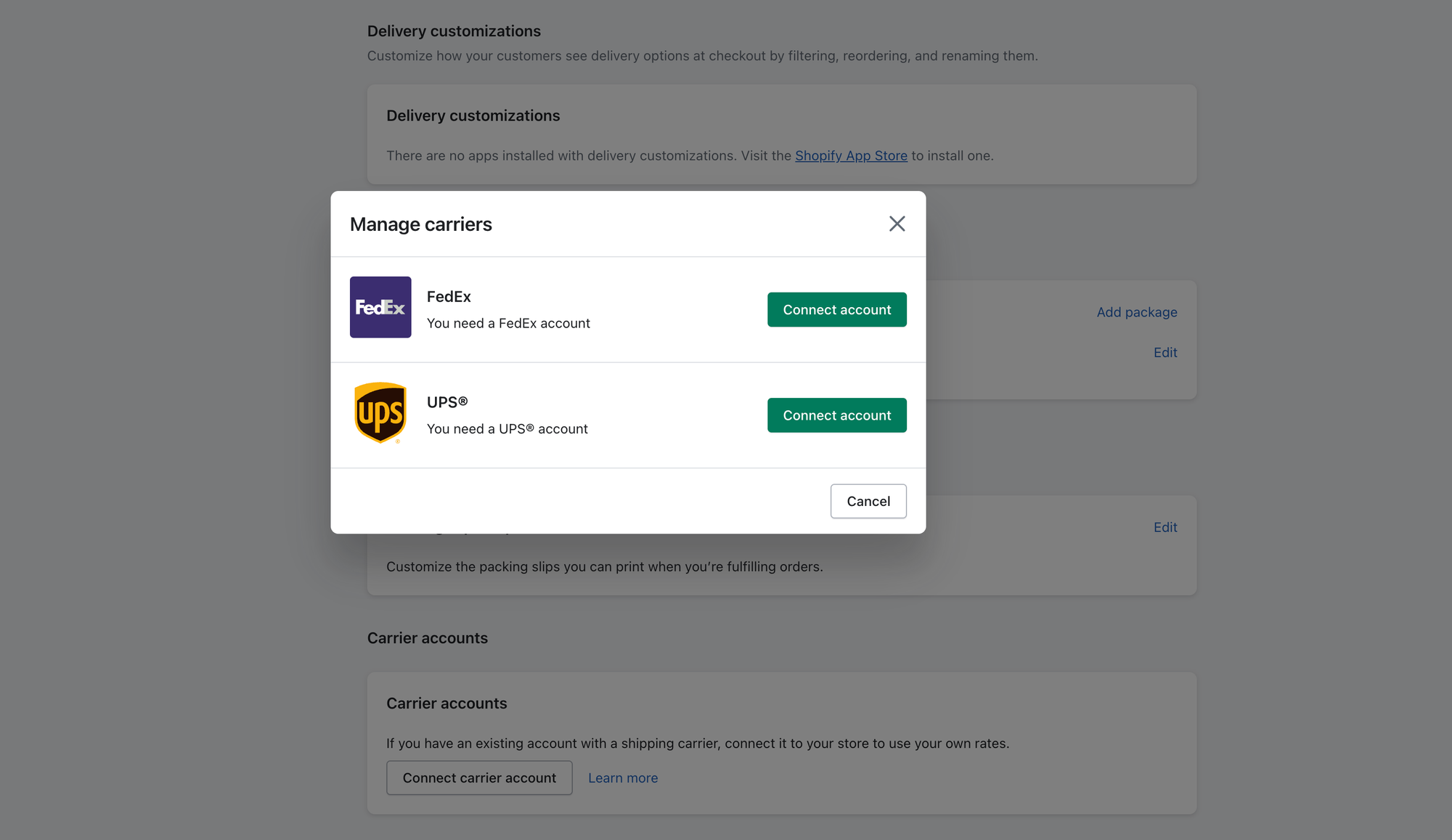In today's global marketplace, cross-border ecommerce sales have become increasingly popular, offering businesses the opportunity to expand their reach and tap into new markets. However, one crucial aspect of successful cross-border selling is setting up accurate shipping rates that align with your business's needs and profitability.
In this blog post, we will explore how to effectively establish shipping rates in Shopify, specifically tailored for cross-border ecommerce sales. Whether you're new to Shopify or looking to optimize your shipping strategies, we'll guide you through the process step by step.
Now, let's dive into the details of how to set up shipping rates for your Shopify store!
Charging shipping rates to ensure profitability
When it comes to setting shipping rates for your cross-border ecommerce sales, ensuring profitability is key. You want to strike a balance between charging a fair shipping fee to your buyers and covering your costs without incurring losses.
Let's explore two essential approaches to achieve this goal:
1. Charge exact shipping rate to your buyers
Some buyers consider showing transparency in shipping rates. They apply an approach to charge buyers the exact shipping rate paid to shipping carriers.
To implement this strategy, you have a couple of options:
You can display shipping rates in your checkout that are calculated by FedEx. You need to set up your FedEx account, and then connect it to your Shopify admin.

- Use a Shopify app or integration available in Shopify shipping:
You can use an app or integration that is already available in Shopify. This integration provides real-time rates based on package weight, dimensions, and destination for each of your Shopify order. However, only FedEx and UPS is available as option to fulfill from locations worldwide. - Consider Setup Requirements for Accurate Rates:
When using the exact shipping rate approach, you can consider setup requirements for accurate rates. This may involve using an app to add size information for each SKU in your Shopify store. Accurate size data enables precise shipping rate calculations based on item dimensions and weight. Although setup may require initial effort, it greatly improves rate accuracy for customer satisfaction.
Note: To activate third-party carrier-calculated shipping, your store needs to be on the Advanced, Shopify, or Plus plan.
While charging the exact shipping rate to your buyers offers transparency and accuracy, there are potential challenges that can arise from this approach. Two of the main problems are...
- Inaccurate product size information:
When charging the exact shipping rate, it's crucial to have accurate size information for each SKU within your Shopify store. However, obtaining precise measurements for every product can be a challenge, especially if you have a large inventory or constantly changing stock. If the size information is incorrect or incomplete, it can lead to inaccurate shipping rates being charged to your customers. This may result in either overcharging or undercharging for shipping, leading to customer dissatisfaction or financial losses for your business. - Wrong shipping rate calculation:
Showing real-time shipping rates at checkout may result in undercharging for shipping. Shopify Shipping only use the product weight to get rates. If you ship a large package, there is a risk that you may got a cheaper rates than what carrier will charge you.
Note: Shipping carriers calculate shipping fee using either the dimensional weight (dim weight) or actual weight of the package—whichever is greater.
2. Charge shipping rates without losing money
While charging the exact shipping rate is a straightforward approach, it may not always cover all the costs associated with the shipping process. To ensure profitability, it's crucial to calculate your average shipping cost per package and adjust your rates accordingly. This involves analyzing your shipping expenses over a specific period, such as a month, and dividing that figure by the number of packages shipped within the same timeframe.
After you understand your average shipping cost, you can set appropriate shipping rates that does not only cover the carrier fees but also account for additional expenses like packaging materials, handling, and fulfillment.
Note: This approach requires diligent tracking of your shipping costs and may involve raising the prices of your items slightly to offset any potential losses.
Offering Free Shipping
In the competitive world of cross-border ecommerce, offering free shipping has become a powerful strategy to attract customers and gain a competitive edge. By offering free shipping to your buyers, you can enhance their shopping experience and incentivize them to make a purchase.
Let's explore the benefits of offering free shipping and how you can effectively implement it in your Shopify store.
- Increased Conversion Rates: Offering free shipping is the potential for increased conversion rates. Many online shoppers view shipping costs as an additional expense or a barrier to making a purchase. By eliminating this cost, you remove a potential hurdle, making your products more appealing and encouraging customers to proceed with their purchase.
- Competitive Advantage: Offering free shipping can differentiate your business and products from others, making your brand more attractive to potential customers. When faced with multiple options, buyers are more likely to choose a seller that provides free shipping, as it simplifies the purchasing process and adds value to their overall shopping experience.
- Strategic Pricing and Product Bundling: To offer free shipping without compromising profitability, you can incorporate shipping costs into your product prices or employ strategic pricing strategies. By adjusting your item prices slightly to absorb the shipping costs, you can maintain your profit margins while still providing the perception of free shipping to your customers. You can also explore product bundling, where you combine multiple items into a single package and offer free shipping on the bundle. This does not only add value to your customers but also helps offset the shipping costs across multiple products, making it more cost-effective for your business.
- Promotional Opportunities: Implementing free shipping offers can serve as a powerful promotional tool. You can strategically use free shipping as part of marketing campaigns, seasonal promotions, or limited-time offers to create a sense of urgency and drive customer engagement.
Conclusion
In conclusion, setting up accurate shipping rates is crucial for cross-border ecommerce success. One of the effective ways to do this is by analyzing your shipping expenses and setting up shipping rates that cover all operation costs of your store. This may take time to start but it will surely help you avoid possible risks on undercharging on shipping.
After you finalize you shipping rate strategy for your cross-border commerce store, you'll need to decide how to handle your shipping operation.
You can take advantage of a shipping solution like Ship&co to easily create shipping labels and automatically fulfill your orders. You can reduce complexity from daily shipping operation and save a plenty of time spent on shipping!
About Ship&co
Ship&co is a global shipping platform designed by and for e-commerce sellers. Created by the team behind Bento&co, who have been selling on Shopify since 2008, Ship&co provides a simple and easy-to-use web dashboard and shipping API. Ship&co helps online sellers ship packages faster by automatically syncing orders and creating shipping labels and invoices in minutes. With Ship&co, you can create shipping labels for FedEx, UPS, DHL, NinjaVan, Yamato, Sagawa, and more, with just two clicks to complete the process and mark your orders as shipped. For more information on Ship&co, visit shipandco.com or reach out to us via hello@shipandco.com !

